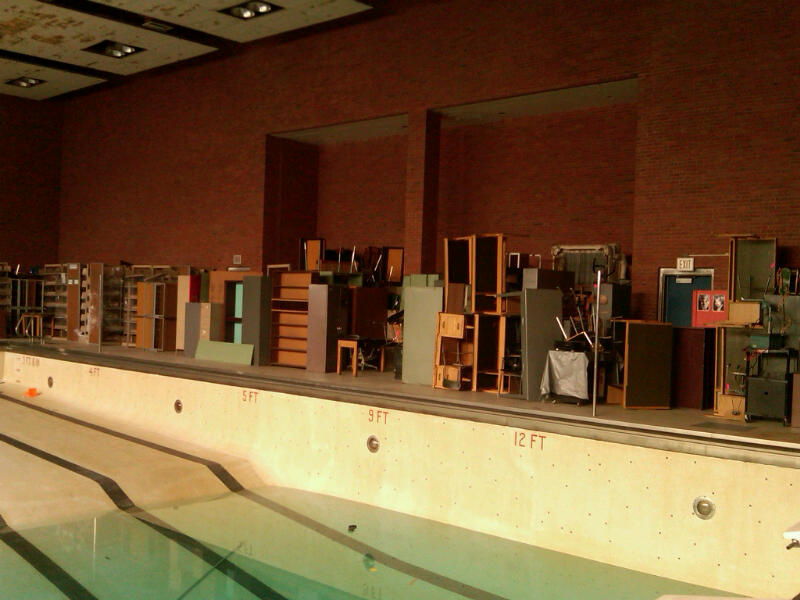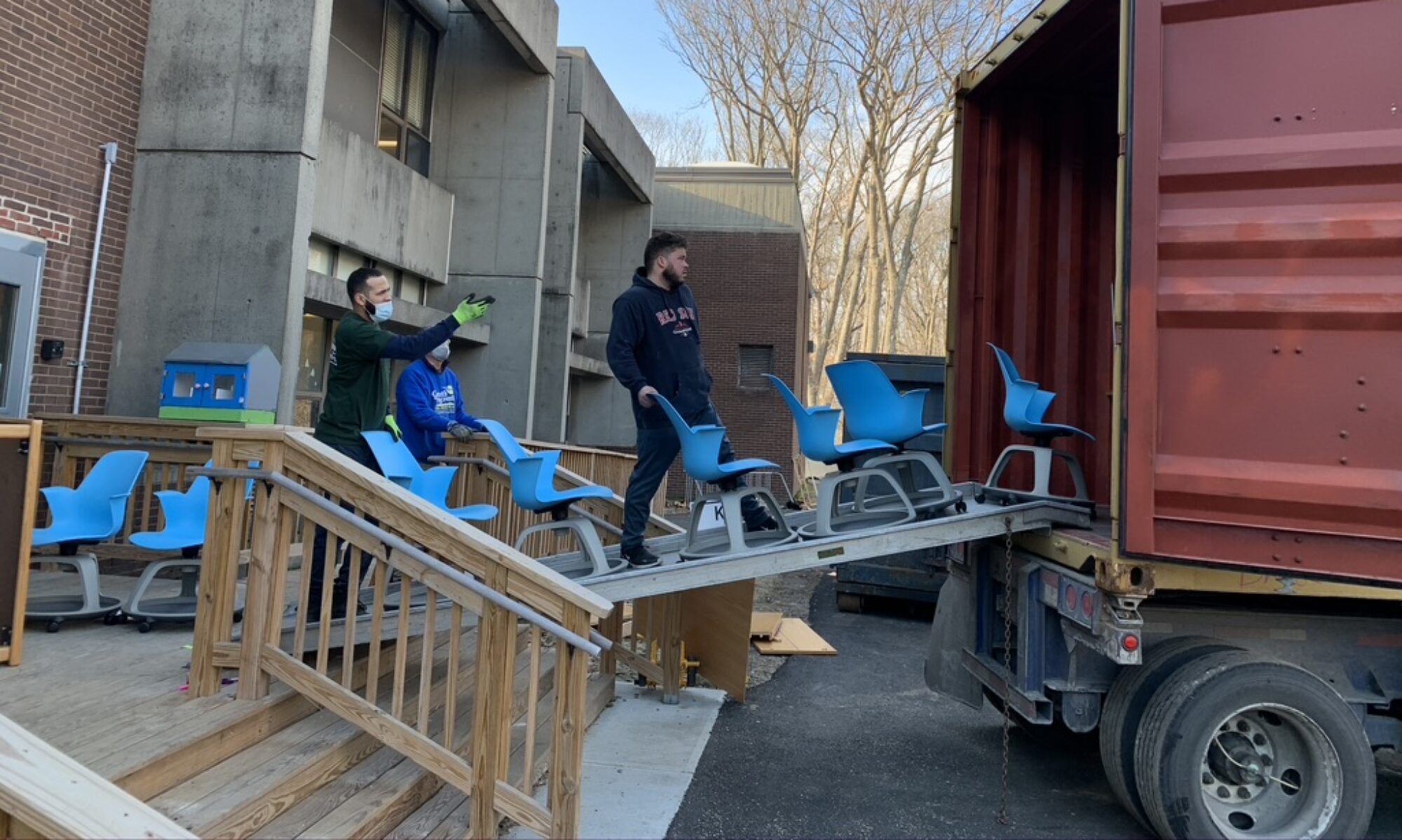This is a story for everyone who says that recycling and reuse cost too much and aren’t worth the effort, and for everyone who has to deal with those folks.
Newton is a suburban city, population about 85,000, less than ten miles from downtown Boston. When the City opened a new high school in August 2010, it reused and donated locally as much furniture as possible from the old school, but was still left with more than 4,000 items of surplus furniture and equipment that needed to go away. Most of the furniture was packed into the gymnasium and pool area; the rest was scattered throughout the old campus.
The City faced tough challenges. The school is located in a residential neighborhood, hampering access for large vehicles. Loading facilities consisted of a single two-foot high dock accessed by one double door. The surplus was less packed than stacked and jumbled into the gym and pool area, a big 3-D jigsaw puzzle, and there were long carries for the surplus that wasn’t in these locations. The surplus was a mix of a lot of usable stuff with a large fraction too decrepit to be used again.
And because of delays in construction schedule and bid preparation, the City had less than two weeks to complete the project before school started – for RFP, bids, award, mobilization, and implementation. After bids and award, the actual project had to be completed in just three days.
There were three options for the surplus: (1) Throw all the stuff out; (2) Recycle some and throw the rest out; (3) Attempt to reuse as much as

possible. The City went through a competitive bid, and selected IRN’s surplus reuse program over the alternatives. Reuse offered environmental and social benefits, but the determining factor was cost. More about that below.
On two days notice, IRN scheduled a 15-man moving crew on each of three days. Seven trailers were loaded on Day 1, nine trailers on Day 2, and seven trailers on Day 3. With such short lead time, IRN divided the surplus between eighteen shipping containers that were loaded directly for overseas destinations, plus five storage trailers that were removed to a local yard. Later these were unloaded and repacked into containers for overseas shipment. In addition, eleven metal recycling containers were loaded with 37 tons of materials that were too worn or damaged to be reused.
At any given time there were between one and three trailers on the loading dock, with an IRN project manager directing surplus into the correct trailer as movers took it from the building. In intervals when there were only one or two trailers at the dock, IRN kept the crew moving and staging furniture as close to the dock as possible, so the next trailer could be loaded efficiently when it arrived. There were also two big dumpsters for pieces too damaged to be reused: one for items that could be recycled as metal, one for mixed debris. IRN’s onsite manager made sure that every item went into the right container.
In all, IRN packed more than 4,200 pieces into 23 trailers and shipping containers. About 2,000 items were shipped to Food for the Poor’s central Caribbean warehouse in Jamaica. Although FFTP ships from Jamaica throughout the Caribbean, most of the Newton North surplus will ultimately be shipped to Haiti for reconstruction after the January 2010 earthquake, and now from floods after Tropical Storm Tomas. Four loads or approximately 700 pieces were shipped to the Fundacion Nuevos Horizontes in El Salvador for community building programs, and four loads were provided to the American Nicaraguan Foundation, whose long-term mission is to construct the 400,000-500,000 homes needed to alleviate the effects of natural disasters and long-term poverty.
What was it they received? AV equipment – 87 items; 170 lab benches; 285 bookcases; 144 storage cabinets; 48 study carrels; 18 wheeled carts; 1,226 chairs; 695 desk-armchairs; 37 couches; 359 full desks; 147 file cabinets; 20 pieces of gym equipment; 33 pieces of kitchen equipment; 40 locker units; 56 shelf units; 87 stools; 518 work and conference tables; plus about 300 other items. Another 37 tons of damaged or unusable items were recycled locally for metal and/or wood content.
And what did it cost? Besides making an incredible difference in the lives of thousands of kids and grownups, besides saving hundreds of cubic yards of landfill space and gaining all the environmental benefits of reuse, what was the bottom line, the dollars and cents bottom line?
Because this was a competitively bid public project, we can answer that question exactly. IRN’s cost to reuse 80% of Newton’s surplus and recycle the remainder was 38% LESS than the next lowest competing bid for recycling and/or disposal.
So the next time some schmo tells you that reuse and recycling aren’t worth it, show them a picture of kids in Jamaica or Haiti sitting in a classroom using the stuff they say we should just toss in a landfill. And show them the price tag. Show them what you already know: that what’s good for the environment and good for society is much more often than not good for the economy as well. Hearts, minds, and wallets, almost always in alignment.
[polldaddy poll=”4113324″]
